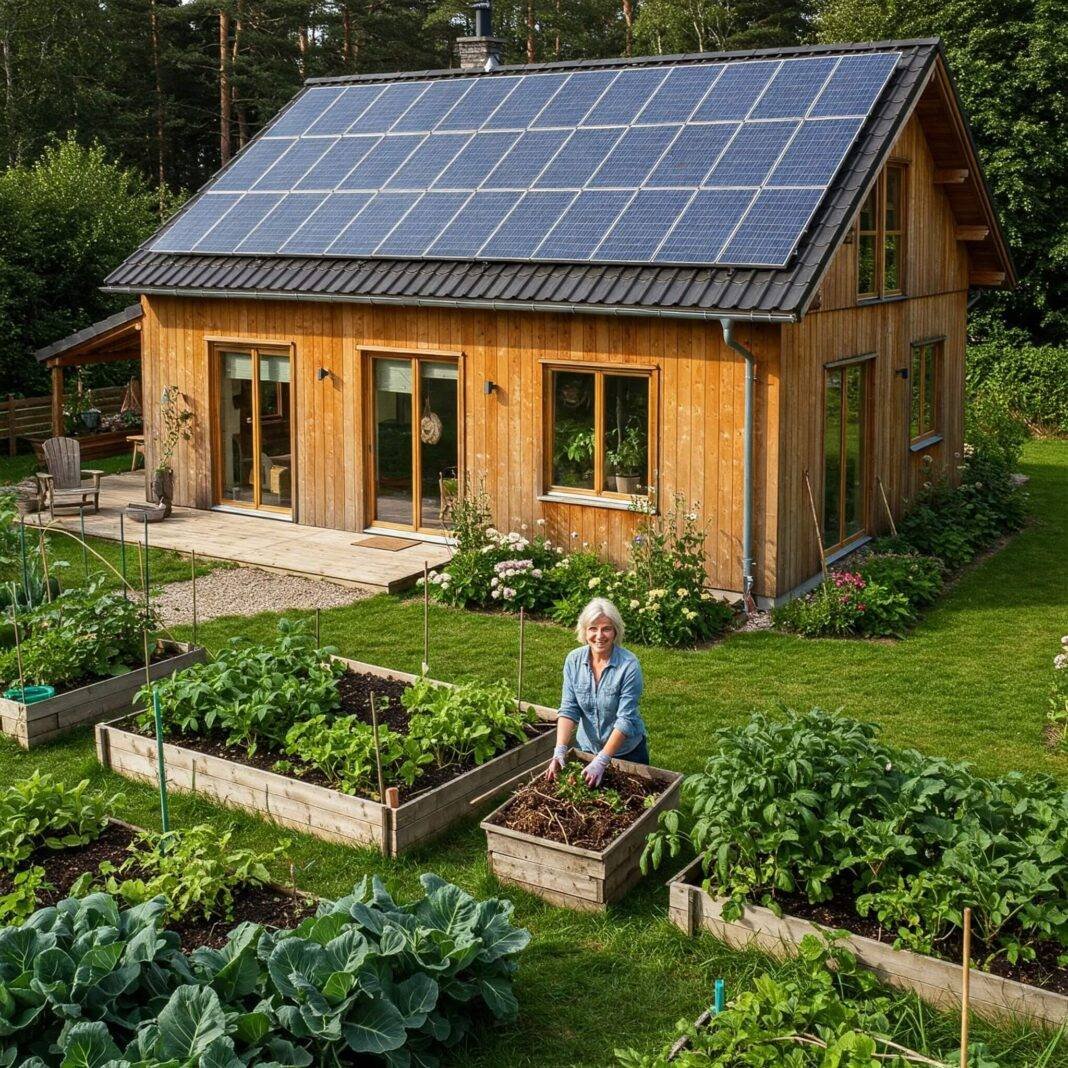Why Sustainable Living’s Kinda Like My Messy Apartment
So, I moved to Brooklyn in ’24, thinking I’d be this eco-rockstar. Spoiler: I’m not. My first compost attempt? Total fail. Left a bucket of scraps under the sink too long, and my kitchen smelled like a dumpster fire. But, like, I’m learning. The EPA says small changes can cut household waste by 25%, which blows my mind. Sustainable living’s a rollercoaster, but I’m strapped in.
My Sustainable Living Obsession: Reusable Stuff
I’m all about reusable stuff now, but it’s been a journey. I bought this fancy metal water bottle, then left it on the F train like an idiot. Now I’ve got a dented one from a thrift shop—works fine, even if it looks like it’s been through a war. My reusable coffee cup’s my pride and joy, even if I spilled oat milk on my shoes last week. Pro tip: get one with a clip for your bag, ‘cause I forget mine otherwise. Check Zero Waste Home for ideas—I’m not there yet, but it’s inspo.

Sustainable Living and My Food Fails
Food’s a big deal for sustainable living. I’m trying to eat less meat, but I’m weak for a good burger. Tried a veggie taco recipe from Minimalist Baker last month—burned it so bad the smoke alarm went off. Ate it anyway; wasn’t half bad. Project Drawdown says going meatless one day a week cuts your carbon footprint by 12%. I also hit the local farmers’ market, but I dropped a zucchini in a puddle once and legit almost cried.
Meal Planning to Avoid Sad Veggies
I started meal planning to stop tossing out wilted greens. Got a chalkboard in my kitchen—my handwriting’s trash, but it helps me track what’s in the fridge. I freeze leftovers in mason jars I snagged from a neighbor, but I’ve definitely thawed soup that tasted like sadness. It’s cut my waste, though, so I’m calling it a win. Sustainable living’s about these small, messy victories.
Sustainable Living with Thrift Store Finds
Thrifting’s my jam. My apartment’s got this janky coffee table I made from pallets—stubbed my toe on it twice this week. Got a lamp from Goodwill that’s sketchy but cute. I found a jacket last month that smells like old books but looks fire. Upcycled a crate into a bookshelf, too, but hammered my finger and yelled some choice words. Sustainable living’s about giving stuff a second chance, even if it’s not perfect.

Energy Hacks for Sustainable Living
Energy’s another sustainable living focus. I swapped my bulbs for LEDs—pricey, but they last longer than my attention span. I unplug chargers when I’m not using ‘em, ‘cause Energy Star says “vampire energy” is real. My weirdest hack? I catch shower water in a bucket for my plants. Sounds nuts, but my basil’s thriving. Okay, it’s drooping a bit, but it’s alive!
My Laundry Struggles
Laundry’s my downfall. Used to run half-empty loads ‘cause I’m lazy. Now I wait for a full load and use cold water—saves energy and my shirts don’t shrink (learned that after ruining my favorite tee). I air-dry on a $5 rack that’s falling apart, and my socks keep slipping off. Sustainable living’s a pain sometimes, but it’s worth it.
Cutting Plastic for Sustainable Living
Plastic’s the worst. I’ve got a drawer of reusable straws and cutlery, but I forget ‘em constantly. Bought a plastic soda bottle last week and felt like garbage. I’m trying bulk stores with my own jars—Package Free Shop has cool tips. Carrying jars is awkward, and I dropped one once, but I’m getting better.
My Plastic Confession
I’m still figuring out this bulk shopping thing. Last time, I weighed my jar wrong and got weird looks from the cashier. Sustainable living means owning your screw-ups and trying again. I’m getting better, but it’s a process, ya know?Why Sustainable Living’s Kinda Like My Messy Apartment
So, I moved to Brooklyn in ’24, thinking I’d be this eco-rockstar. Spoiler: I’m not. My first compost attempt? Total fail. Left a bucket of scraps under the sink too long, and my kitchen smelled like a dumpster fire. But, like, I’m learning. The EPA says small changes can cut household waste by 25%, which blows my mind. Sustainable living’s a rollercoaster, but I’m strapped in.
My Sustainable Living Obsession: Reusable Stuff
I’m all about reusable stuff now, but it’s been a journey. I bought this fancy metal water bottle, then left it on the F train like an idiot. Now I’ve got a dented one from a thrift shop—works fine, even if it looks like it’s been through a war. My reusable coffee cup’s my pride and joy, even if I spilled oat milk on my shoes last week. Pro tip: get one with a clip for your bag, ‘cause I forget mine otherwise. Check Zero Waste Home for ideas—I’m not there yet, but it’s inspo.

Sustainable Living and My Food Fails
Food’s a big deal for sustainable living. I’m trying to eat less meat, but I’m weak for a good burger. Tried a veggie taco recipe from Minimalist Baker last month—burned it so bad the smoke alarm went off. Ate it anyway; wasn’t half bad. Project Drawdown says going meatless one day a week cuts your carbon footprint by 12%. I also hit the local farmers’ market, but I dropped a zucchini in a puddle once and legit almost cried.
Meal Planning to Avoid Sad Veggies
I started meal planning to stop tossing out wilted greens. Got a chalkboard in my kitchen—my handwriting’s trash, but it helps me track what’s in the fridge. I freeze leftovers in mason jars I snagged from a neighbor, but I’ve definitely thawed soup that tasted like sadness. It’s cut my waste, though, so I’m calling it a win. Sustainable living’s about these small, messy victories.
Sustainable Living with Thrift Store Finds
Thrifting’s my jam. My apartment’s got this janky coffee table I made from pallets—stubbed my toe on it twice this week. Got a lamp from Goodwill that’s sketchy but cute. I found a jacket last month that smells like old books but looks fire. Upcycled a crate into a bookshelf, too, but hammered my finger and yelled some choice words. Sustainable living’s about giving stuff a second chance, even if it’s not perfect.

Energy Hacks for Sustainable Living
Energy’s another sustainable living focus. I swapped my bulbs for LEDs—pricey, but they last longer than my attention span. I unplug chargers when I’m not using ‘em, ‘cause Energy Star says “vampire energy” is real. My weirdest hack? I catch shower water in a bucket for my plants. Sounds nuts, but my basil’s thriving. Okay, it’s drooping a bit, but it’s alive!
My Laundry Struggles
Laundry’s my downfall. Used to run half-empty loads ‘cause I’m lazy. Now I wait for a full load and use cold water—saves energy and my shirts don’t shrink (learned that after ruining my favorite tee). I air-dry on a $5 rack that’s falling apart, and my socks keep slipping off. Sustainable living’s a pain sometimes, but it’s worth it.
Cutting Plastic for Sustainable Living
Plastic’s the worst. I’ve got a drawer of reusable straws and cutlery, but I forget ‘em constantly. Bought a plastic soda bottle last week and felt like garbage. I’m trying bulk stores with my own jars—Package Free Shop has cool tips. Carrying jars is awkward, and I dropped one once, but I’m getting better.
My Plastic Confession
I’m still figuring out this bulk shopping thing. Last time, I weighed my jar wrong and got weird looks from the cashier. Sustainable living means owning your screw-ups and trying again. I’m getting better, but it’s a process, ya know?
































